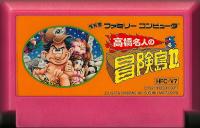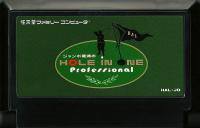DnA 2-11: How to Make Professional Lock Tools

The making and possessing of lock-opening tools may be regulated by state and local laws. Check these before you start. Although all of the techniques and materials discussed herein will work, I accept no liability whatsoever regarding use of this information.
The mere insertion of a lockpick in a keyway constitutes "entry" (as in "breaking and entering"). Everything you have heard about life in the can is true, so if you want to score big, take my advice and run for office that's legal!
-Eddie The Wire
TOOLS AND SUPPLIES
A. TOOLS
- Grinding machine with 1/4" - 3/4" coarse wheel. (A lot of metal must be removed in some plt, so a file would be too slow and tiring. A cheap alternative is an arbor mounted stone chucked in an electric drill.)
- 6" - 10" flat mill cut file
- Gun blue
- Small ruler
- Paint masking tape.
- Scribe or nail
B. SUPPLIES
- 1/4" Spring steel (The do-it-yourself sewer snakes sold at hardware stores work well. It is also pre blued.)
- Feeler gauge stock, 1/2" x .025" x 12" and 1/2" x .035" x 12"
- Hacksaw blades (1/2" x 12")
- Two extra-cheap pin-tumbler rim cylinder locks. (Buy two of the same brand.)
- And of course, a quiet, well-lighted place to work is good.
Also, any hand tools you may have will make the work that much easier. The above should be considered the bare minimum. Let me emphasize that the purchase of a small bench grinder may involve a medium expense, but is is well worth it in time saved.
Your basic set of PLT will consist of one diamond, two lifters, and two tension wrenches, This will allow you to work 90% of the locks you encounter.
BEGINNING MEASUREMENTS
Several measurements are necessary to size the PLT to a particular lock, and also to you own opening technique. First (alpha) measure the distance from the key stop (the part of the key that butts against the lock face and prevents further insertion) to the exact bottom of the farthest pin cut, as shown in figure 1. Next (beta) measure the distance between two adjacent pin cuts. Finally grab a pencil (you should be writing down these measurements) and pretend it is a lockpick, holding the eraser end up to a lock as you usually hold your lockpick, If you have never used a pick before, hold it in your usual pencil grip. Mark the point at which the pencil shaft no longer touches any part of your hand, and then measure from the eraser to that mark for the gamma measurement.
≥<---total key length-->≥
≥ ≥
≥ ≥
≥ ≥<--alpha-->≥ ≥
≥ ≥ ≥ ≥
≥ ≥ beta>≥ ≥< ≥
≥ €€€€€€ ≥ ≥ ≥ ≥
≥€fl€€€€€€ƒ/\_/\ƒ/\_/\-/\≥
€‹€€€€€€ÕÕÕÕÕÕÕÕÕÕÕÕÕÕ/
€€€€€€ROUGH PROFILE BLANKS
At this point we begin making rough profile blanks, or RPB. Add one alpha dimension, one gamma dimension, and three beta dimensions together. The total is the RPB overall length. With luck, it may be less than 4 inches, enabling you to cut three RPB from one piece of stock. If you are using painted hacksaw blades, fine lines can be scribed directly onto them. Plain blades and feeler stock must be blued (with your gun blue) to accept layout lines. Your best bet is using the plumers snake if you can find it. This stuff is preblued and beats the hell out of hacksaw blades.
Scribe your RPB length lines and cut them apart by grinding on the face of the stock. In any grinding, the heat produced can quickly rise to levels hot enough to un-temper the steel. If any part of a PLT becomes un- tempered (indicated by a dark blue or straw-colored area), it will easily bend at that point and make pin manipulation impossible. Also, no thin steel shapes can be retempered by heating and quenching because they will warp badly. A burned pick is a ruined one. A good way to keep grinding time short is counting to three while grinding. cooling the PLT in cold water, and then starting over with the count. As the cross-section gets smaller and there is less material to carry excess heat away, only grind for a count of one or two before cooling. Having the water immediately below the wheel saves a lot of time and motion. Sharp angles and points on PLT really heat up fast, so cool frequently. Holding the PLT in bare fingers while grinding is another good way to avoid burning (the steel, at least).
‹‹ ‹‹‹‹‹‹‹‹‹‹‹‹‹‹‹‹‹‹‹‹‹‹‹‹‹‹‹‹‹‹
€€‹‹‹‹‹‹‹‹‹‹‹‹‹‹‹‹‹€€€€€€€€€€€€€€€€€€€€€€€€€€€€€€
sample RPBTHE DIAMOND PICK
At this point, collect keys for your two sample locks and examine the different bitting depths. You are looking for the maximum height difference between two adjacent bitting appreciable height difference, but occasionally just by chance, there will be nothing but slight differences in biting depths. If this happens, examine any keys in your pocket that have the same alpha/beta dimensions, looking for an appreciable height difference (which we will call a delta dimension). Once you find the maximum delta dimension, trace that section of the key directly onto an RPG. The object is to duplicate the exact angles and height of that selected part of key bitting on the RPB. Remember to keep the bottom of the lower of the two bitting depths flush with the top of the shank on the tool. When you have traced this, grind to the new outline, taking special care not to lessen the delta dimension at all by grinding the top of the pick end. Your finished product should look like a diamond. If it has a flat spot at the top, grind to eliminate the flat spot, while keeping the height the same.
As you expand beyond a basic PLT set, you may want diamond picks with lower height diamonds (delta dimensions). Note: A pick cut to the maximum delta dimension can lift a pin to the necessary height without the shank of the pick binding and possibly un-picking the lower adjacent pin. A PLT with a lower height delta is, however , useful in special situations and other makes/models of locks. To produce these smaller PLT, Simply trace your maximum delta pick directly onto a RPB, and then continue the process shown but past the point that is shown to stop grinding. This will effectively lower the diamond to any desired height. Remember to keep the angle the same or the pick will not easily slide in under the pins.
⁄ƒƒƒƒƒgrind to eliminate flat
≥
Successive key cutsƒƒƒƒƒƒƒ> //ƒƒ\
lower diamond height // / /^\______________________
ƒƒƒƒƒƒƒƒƒƒƒƒƒƒƒƒƒƒƒƒƒƒƒƒƒƒƒƒƒƒTHE LIFTER PICK
The working end of a lifter is merely an upswept curve with a small flat spot on top to hold the pin. Remember, a diamond is pointed, but a lifter has a flat on the top. You can cut these PLT easily by tracing your maximum delta profile on a RPB and then making modifications. In this re-designing, make sure that the distance from the middle of the flat top of the PLT to the beginning of the upsweep is at least as great as the beta dimension. If not, the sweep might lift or bind on an adjacent pin. Make this PLT in two delta dimensions to complete the pick components of the basic PLT set. The smallest delta dimension among your sample keys would be a good choice for a second pick size.
SNAKE PICKS
Besides lifter and diamond profiles of various delta heights, there are also half-rounds and multiple-cut PLT (usually called snake picks), Both types are useful when "raking" the lock with a diamond fails, and "lifting" is too tedious. (To understand this fully, you should have some lock-picking theory down, but if you don't just trust me.) Half-round profiles are laid out by marking the delta dimensions on a RPB and then tracing various curves whose tops are no higher than this delta dimension. The base of the arc should be wider than two beta dimensions so that part of the curve will lift two or more adjacent pins, unlike diamonds and lifters which work only one pin at a time. Since the arc base is wider than two beta dimensions a special RPB should be made for this and the "snake" PLT. A snake PLT attempts to duplicate a two/three/four pin portion of actual key profile, thereby holding up a group of pins simultaneously that would require great skill to pick individually. I suggest that you not use RPB for these profiles, but instead lay out a blank with lines for four beta dimensions as shown:
<ƒƒƒƒƒƒƒƒƒƒfour beta dimensions
≥ ≥ ≥ ≥
_____≥_≥_≥_≥_______________________________________
≥ /^\_/^\|____________/ ≥
ƒ/ƒƒƒƒƒƒƒƒƒƒƒƒƒƒƒƒƒƒƒƒƒƒƒƒƒƒƒƒƒƒƒƒƒƒƒƒƒƒƒƒƒƒƒƒƒƒƒƒŸCutting then becomes a matter of selecting a good profile, tracing and cutting it out. Notice that you can make up a composite of individual key bitting cuts selected and arranged according to any to any pattern by marking the depth of cut only, and then connecting the depths with straight lines. Just remember to never exceed the delta dimension between adjacent cuts, or the PLT will not work smoothly or at all, because of too steep angles on the bitting cuts.
The problem is: What sequence or profile of cuts works best? How many cuts should be used, and how deep? since the object is to duplicate key action and all keys are different there is no "best" profile for all locks.
One approach is to cut a profile that works on a sequence difficult to open by lifters and diamonds, such as:
- deep, shallow, deep, medium
- deep, shallow, deep
- deep, shallow, medium
These lift one or two pins high, while lifting adjacent pins only a little something lifters cannot do. Experiment also with the following profiles:
- deep, medium, shallow, deep
- medium, deep, shallow
- deep, deep, shallow, medium
Another concept to try out is half-depth profiles. Keys are usually cut according to steps or increments of cut. An average system might have 9 - 10 steps of key bitting depth, even though not all are present on one key. buy cutting one or more of your PLT bitting depths either high or low by exactly one-half of this step, you may increase the number of combinations the PLT will work. This is especially true of worn or cheap locks with loose-fitting parts. The rule here is experiment. Some profiles may not open any locks, in which case they can be re-cut to other profiles. Usually a "snake" PLT is a last resort, but some can be very valuable.
TENSION WRENCHES
Two tension wrenches are required to complete the basic PLT set. Start by cutting off a 6 inch length of .060 - .090 diameter music wire and bend as shown
∞
∞
‹‹‹‹‹‹‹‹‹‹‹‹‹‹‹‹‹‹‹‹‹‹€
∫
∫Now go to the wheel and grind the flats indicated, the object being to obtain ends wit rectangular cross-sections. Test for a tight fit as the grinding progresses by trying the tool in a keyway. Try also to grind another wrench in which the flats have a slight taper getting smaller near the tip. This will permit a tight wedge fit and thus increase the feel and control of the wrench. Wrenches with a loose keyway fit seem to work better with jerking or raking pick procedures . While wrenches with a tight fit give more control in lifting pick procedures.
Or you can use RPB stock to make tension wrenches. The RPB stock is to wide for a tension wrench you will need to make it thinner. I usually do this after I've put the proper bends on it you can bend it similar to the wrench shown above or like this:
…ÕÕÕÕÕflflflflflflflflflflflflflflflflflflflflflflflflflflfl
∫ ^ 45¯ twistMake a 90¯ bend 3/4" from the end of the RPB stock put a 45¯ twist about 1/2" from the 90. Now grind it down till it is about 1/8" wide. You need a few of these altering only the end to produce different widths.
This completes the basic PLT set. Using this set you can open 90% of ALL the locks you'll encounter.


















